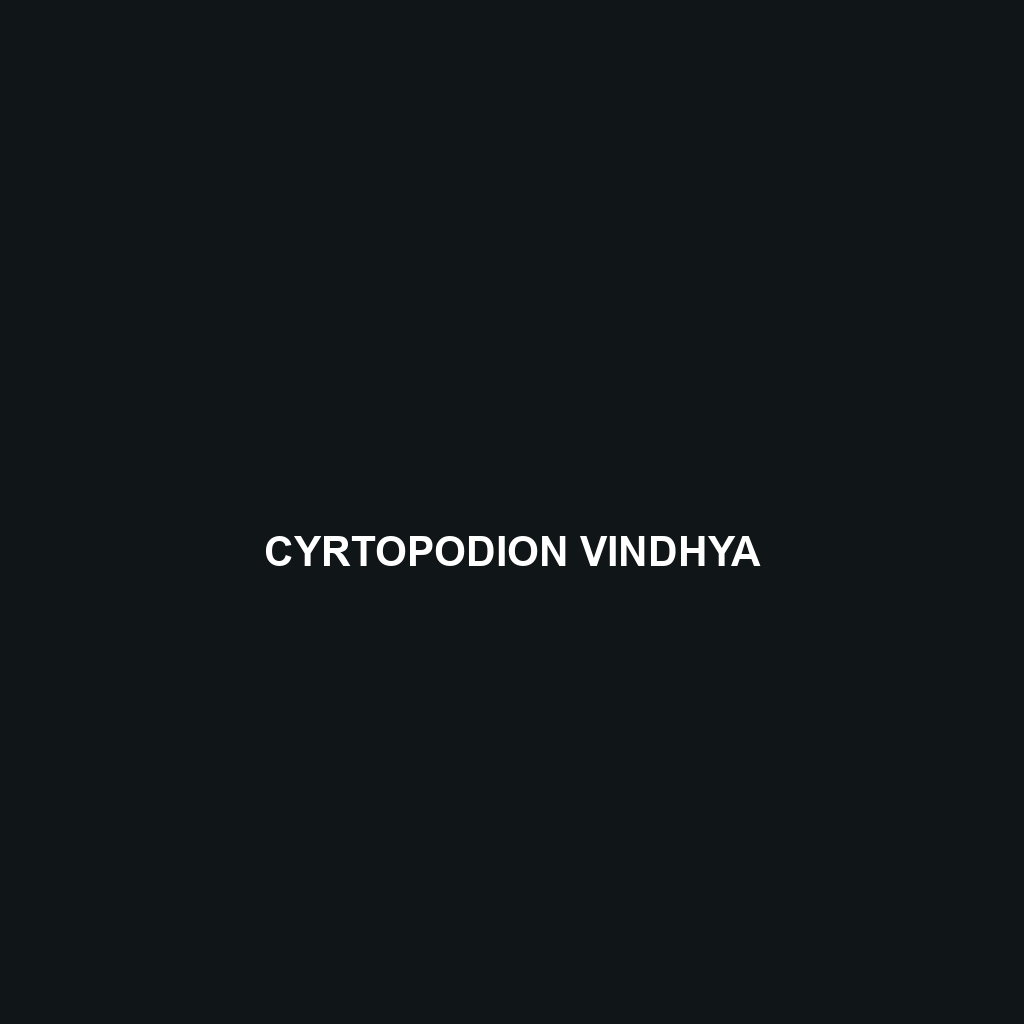Cyrtopodion vindhya: Species Overview
Common Name: Cyrtopodion vindhya
Scientific Name: Cyrtopodion vindhya
Habitat
Cyrtopodion vindhya, commonly known as the Vindhya Gecko, is primarily found in the rocky and arid regions of the Vindhya Range in central India. This species thrives in dry deciduous forests, scrublands, and areas with ample stones and crevices, which provide shelter and hunting grounds. The climate in these regions is characterized by significant temperature fluctuations between day and night, creating a unique microhabitat for the gecko.
Physical Characteristics
The Vindhya Gecko is a small to medium-sized lizard, typically measuring between 10 to 15 centimeters in length. It exhibits a distinctive coloration that ranges from light brown to gray, often featuring intricate patterns that aid in camouflage against rocky backgrounds. This species possesses a flattened body, large bulbous eyes, and elongated toes with adhesive pads, allowing it to navigate its rocky habitat efficiently. These adaptations make it well-suited for climbing and clinging to surfaces.
Behavior
Cyrtopodion vindhya is primarily nocturnal, actively foraging for food during the night. Its behavior includes basking on warm rocks in the early evening and retreating to crevices during the day to avoid predators. This species is known for its agility and speed, making quick escapes when threatened. Additionally, it exhibits territorial behaviors, especially during mating season, where males engage in displays and vocalizations to attract females.
Diet
The diet of Cyrtopodion vindhya consists mainly of insects and other small invertebrates. Common food sources include crickets, ants, and moths, which provide the necessary protein for growth and reproduction. The Vindhya Gecko employs a sit-and-wait hunting strategy, utilizing its camouflaged body to ambush prey that comes too close.
Reproduction
Cyrtopodion vindhya exhibits egg-laying reproductive habits. Breeding typically occurs during the warmer months, with females laying clutches of 1 to 2 eggs in hidden, secure locations such as under rocks or within dense vegetation. The incubation period lasts around 30 to 60 days, depending on environmental conditions. Hatchlings are born fully developed and are independent from birth.
Conservation Status
The current conservation status of Cyrtopodion vindhya is classified as vulnerable due to habitat loss and fragmentation caused by human encroachment, deforestation, and climate change. Conservation efforts are crucial to ensure the survival of this species, highlighting the importance of preserving its native habitat.
Interesting Facts
Some fascinating facts about Cyrtopodion vindhya include its ability to change its coloration slightly to enhance camouflage further. Additionally, this species has a unique vocalization pattern that is often used in courtship displays, making it a subject of interest for herpetologists studying communication in reptiles.
Role in Ecosystem
Cyrtopodion vindhya plays an essential role in its ecosystem as both predator and prey. By controlling insect populations, this gecko contributes to the ecological balance. Additionally, it serves as a food source for larger predators such as birds and snakes, which helps maintain the food web in its habitat.
